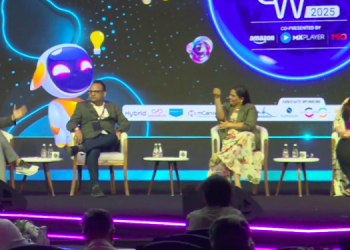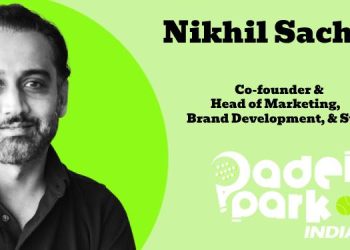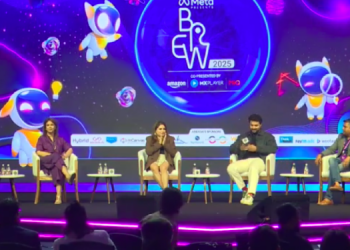Marketers delved deep into how they are reorienting their strategy to connect and engage with target audiences at the Ipsos ‘After Hours’ event hosted in Bengaluru on October 5, 2023.
A panel discussion moderated by Geeta Lobo, Country Chief Client Officer, Ipsos India, discussed ‘Navigating Consumer Evolution: How brands stay relevant and deeply connected in a changing world’.
The panel featured Vanda Ferrao, Chief Marketing Officer, WOW Skin Science; Shuvadip Banerjee, Chief Digital Marketing Officer, ITC; Amitabh Pande, Chief Consumer Strategy and Planning Officer, Diageo; and Amit Adarkar, CEO, Ipsos India.
The discussion opened with panellists speaking about coping with and taking their respective brands through the current highly dynamic environment.
Speaking about the changes faced by the D2C brand, WOW Skin Science, Vanda Ferrao, Chief Marketing Officer said, “We are a D2C brand focused specially on GenZ and millennials. We are in the thick of the action. I won’t say ‘cope’ because it has a negative connotation. What we are doing is thriving and extracting from what’s actually happening. We have always been catering to aspiring India. What has worked for us is that we are playing on trends, for us Google has always been our friend and Google trends is what we see. We see what ingredients are popular and we have an in-house research and development team and come up with the range of different products.”
She added, “We understood that we need to build distribution and understood Amazon really well. We understood that Gen Z and millennials are learning about the brands from Instagram. We learnt the Instagram algorithm really well. We created demand and fulfilled demand on Amazon, that’s how the brand was built. When the brands grew digitally there was inherent demand offline as well, so we worked on the distribution channels. Events like the pandemic fuelled the brand’s growth.”
Diageo’s Pande said, “What worked for us is going back to the brand and understanding what it stands for, purpose, reasons for existence. And then focus was given to things happening around us. That gave us more clarity.”
“Then I am looking at all of the trends and data through the lens and which of this make it relevant for the brand and then build on it,” he added.
Banerjee said that ITC is in an interesting phase, not a challenging one.
He explained, “When you are trying to be constantly relevant to a consumer, the task is understanding all these personas. Previously, we followed traditional methods like ‘day in life of a consumer’, consumer immersions. They have exponentially increased over time. These keep you grounded to how things are shaping up. The question arises of how to use it ahead of the curve, speak relevantly to the consumers. Over time, we have realised that advertising is not the only way to keep building the brand. Today if you believe that ads are the only way to build the brand, then we are like the winged horses. There are a lot of efforts you need to do with your own assets. You have to look at how you are using content on your own platform and on how the brand is built on a proper social media strategy. What makes it interesting is how we use the creative economy meaningfully. We have been extensively on communities now, building a couple of branded and unbranded communities.”
“Parallelly, we are building on other things, like the angle of customisation. We have been talking about customisation for a long time, but could we build a platform where consumers can choose the way of branding and what they want to add etc.? They are not sales channels, but brand building channels. Gen Alpha is talking about authenticity a lot more than Gen Z,” Banerjee said.
Banerjee added that brands that serve a purpose and are conscious of the need to be catalysts of social and environmental transformation are likely to find a way into the consumers’ consideration set.
“And adapting to change quickly has now become the norm as consumers expect brands to constantly step up to and deliver to their aspirations. We’ve progressed to going beyond advertisement as the core route to building brand love. In sync with consumer expectations, we have been constantly overhauling our product and experience delivery mechanism and engagement, even as consistency and relevance continue to be key drivers,” he noted.
Adarkar said, “We seem to have all the tools, the amount of data we have about consumers is amazing which was a difficulty five years ago and these are 360-degree. We are at an interesting junction where data is not an issue, but what to do with the data becomes a discussion topic.”
Pande added that people are increasingly looking for brands with purpose, brands that match with their own value systems and not only as a source of consumption to fulfil their needs. With the next generation of young adults coming into mainstream, they are looking at brands to build progressive narratives that contribute towards building a better society, he emphasised.
Feedback: Editorial@medianews4u.com

















